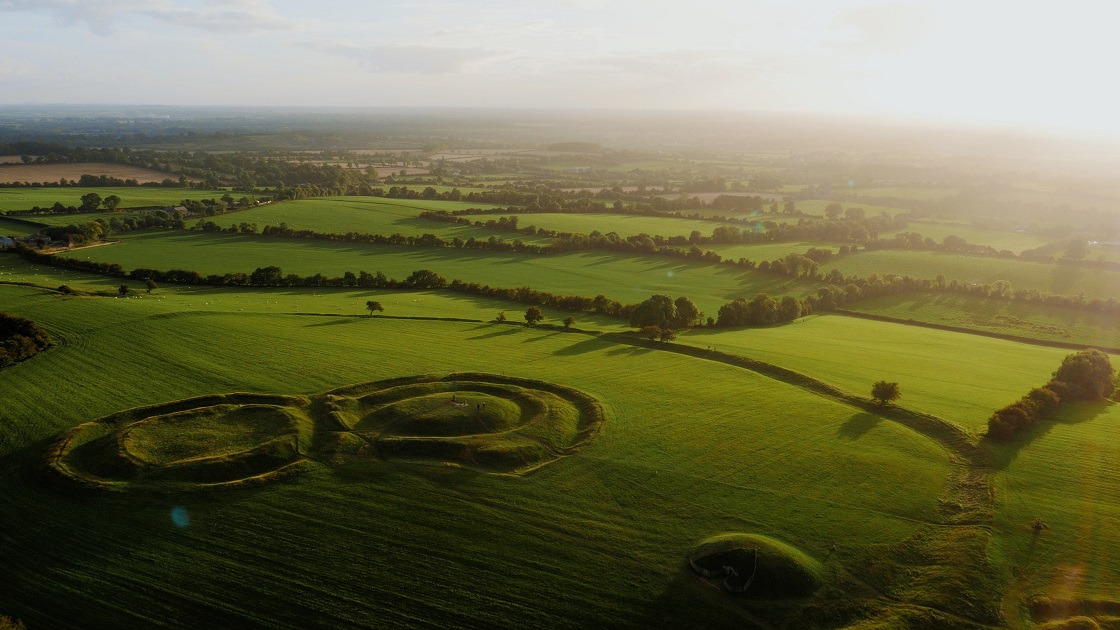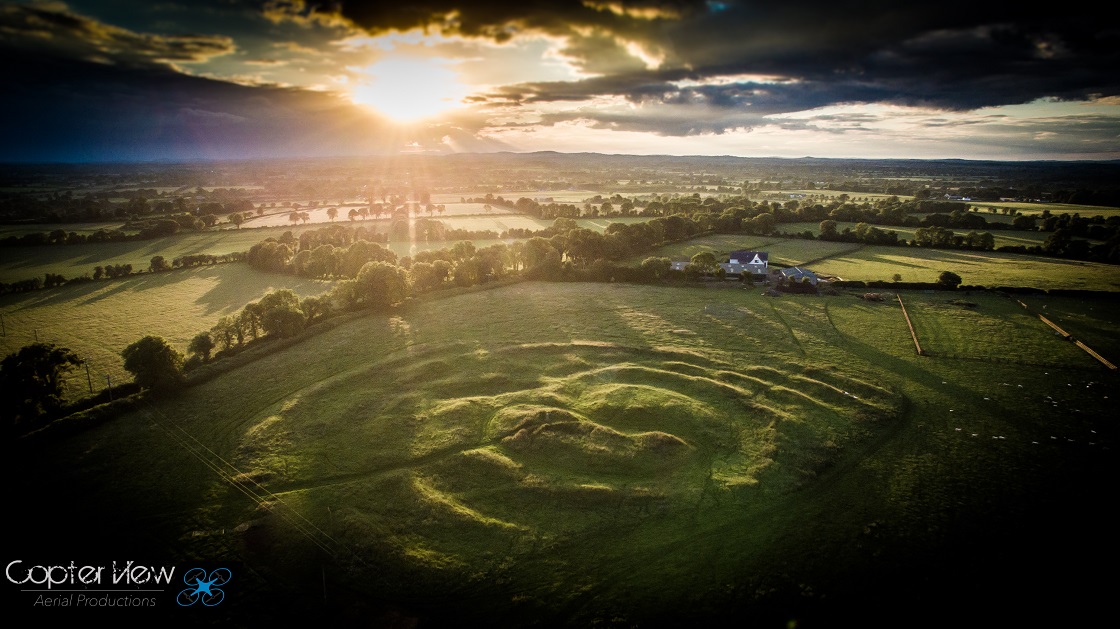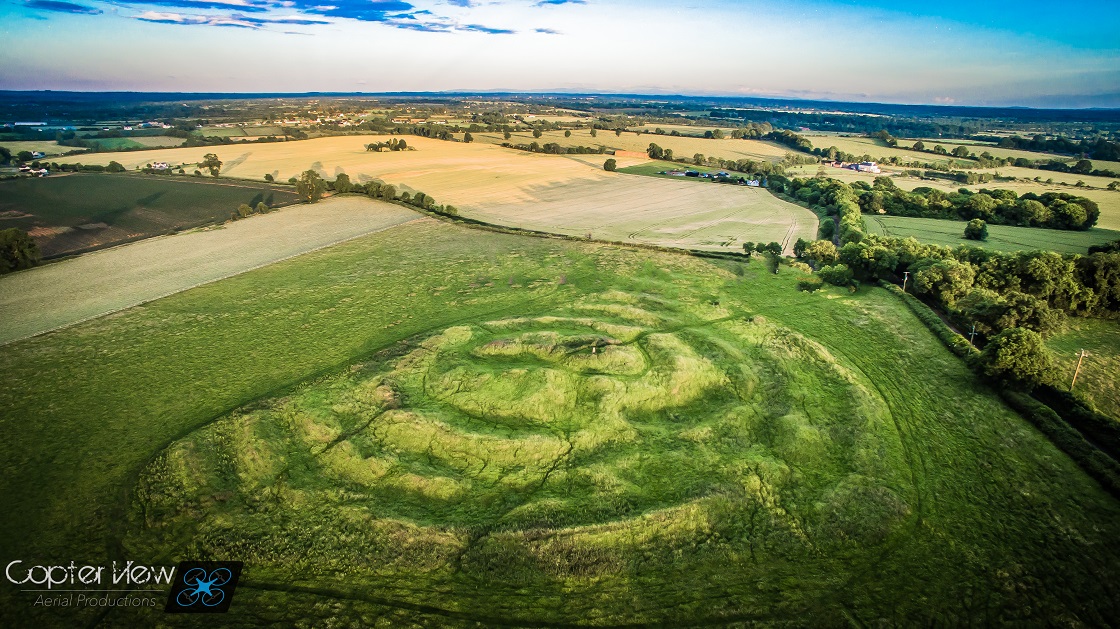Samhain, the pagan harvest festival that we now call Halloween, was an important event celebrated at the end of October and start of November in Ireland and Britain during the so-called ‘Celtic’ period. It marked an important transition time as the summer ended and the cold winter approached (although there is no evidence it was the start of a Celtic ‘New Year’ calendar).
According to folklore, Samhain originated here in County Meath in the Boyne Valley more than 2,000 years ago. At the ancient Hill of Tlachtga, near Athboy, the Samhain Fire Festival began, celebrating this time of harvest and transition, with feasting and games as the long winter nights approached.
The Irish legends tells us that many important or portentous events took place at Samhain. It was at Samhain when the spirits of the Otherworld, the ‘Sidhe‘, were more likely to emerge from their mounds (also called ‘sidhe‘) such as Newgrange, Knowth, Loughcrew and others elsewhere in Ireland. One tale recounts how the legendary warrior Fionn mac Cumhaill had to defend the royal complex at the Hill of Tara from an attack by a fearsome monster who had attacked every Samhain night.
In the legends there was no ‘thinning of the veil’ (this was a Victorian belief that developed with spiritualism), indeed there was no ‘veil’ at all as the entire world was infused with magic, and the fairy folk lived in mounds and tumuli.
The Hill of Tlachtga and Samhain
One place in County Meath that has a strong mythical association with Samhain is the Hill of Tlachtga, now called the Hill of Ward, one mile east of Athboy. Legend has it that during the time of the Tuatha Dé Danann, the hill took its name from a sun goddess called Tlachtgla. She was the daughter of the druid, Mogh Ruith and in one legend Tlachtga died giving birth to three sons; Dorb, Cuma and Muacth and was buried on the hill.
According to Geoffrey Keating, a 17th century chronicler of Ireland, a Samhain fire festival began on the hill of Tlachtga. Keating wrote in his History of Ireland that it was here on the hill that "the Fire of Tlachtgha was instituted, at which it was their custom to assemble on the eve of Samhain to offer sacrifice to all the gods...it was of obligation under penalty of fine to quench the fires of Ireland on that night, and the men of Ireland were forbidden to kindle fires except from that fire."
Recent archaeological excavations at Tlachtga suggest this ancient hill was indeed used for feasting and ceremonies from the late Bronze Age (1200–c. 500 BC) through to the early medieval period.
Listen to some wonderful audio on the Hill of Ward & Rathmore Church, Athboy, County Meath - Part of the Boyne Valley Drive.
Samhain in the Boyne Valley
It wasn't only the Hill of Tlachtga that has a Samhain association in Meath. The passage tomb on the Hill of Tara known as the Mound of the Hostages might have been built on a Samhain sunrise alignment. Some believe that Cairn L and Cairn U at Loughcrew were also built on a Samhain (and Imbolc) alignment to honour the cross-quarter days.
The Feis Temro at the Hill of Tara was one of the most famous Samhain harvest festivals. Keating wrote that at the Feis Temro ('Feast of Tara'), held once every three years, laws were made and histories recorded, and "It was also their custom to pass six days in feasting together before the sitting of the assembly, namely, three days before Samhain and three days after it, making peace and entering into friendly alliances with each other".

Modern Halloween and its links to Samhain
The origins of Halloween on the 31st October are obscure but it likely contains elements of the old Samhain festivals. Samhain incorporated aspects of Irish, Scottish and Welsh customs. It also contains elements of Christian traditions, especially when the Christian festival of All Saints Day and All Souls Day were moved in the medieval period to 1 November and 2 November respectively.
It was during the modern period that Halloween became associated with the dead, likely due to this Christian connection. There is no evidence that the ancient Samhain festival had a connection with the dead and departed.
Modern folklore celebrates Halloween as a time where spirits must be appeased lest they cause mischief among the living, and even the living are allowed to cause mischief that they usually wouldn’t be allowed to get away with! Many aspects of Halloween have developed from these northern European folk customs, such as dressing-up, bobbing for apples and making offerings of food and trick or treating, and when Europeans migrated to America they brought these customs with them. In the USA Halloween grew in popularity and reemerged in Ireland and Britain, and then Europe, in the later twentieth century.
The Jack O’Lantern is first mentioned in America in the late 18th century (specifically a turnip lantern in 1778 in Pennsylvania), followed by mentions of its use in late 18th century England and Scotland and Ireland. Turnips and pumpkins were used by the poor as lanterns in Ireland and Britain and they were first linked to Halloween in a Scottish dictionary in 1808. More info here.
Today we celebrate the ancient Samhain traditions and the modern Halloween festivities with the Spirits of Meath Halloween Festival. Follow the link for a wide range of events; whether it's fun by day or fright by night, there's something for everyone!



